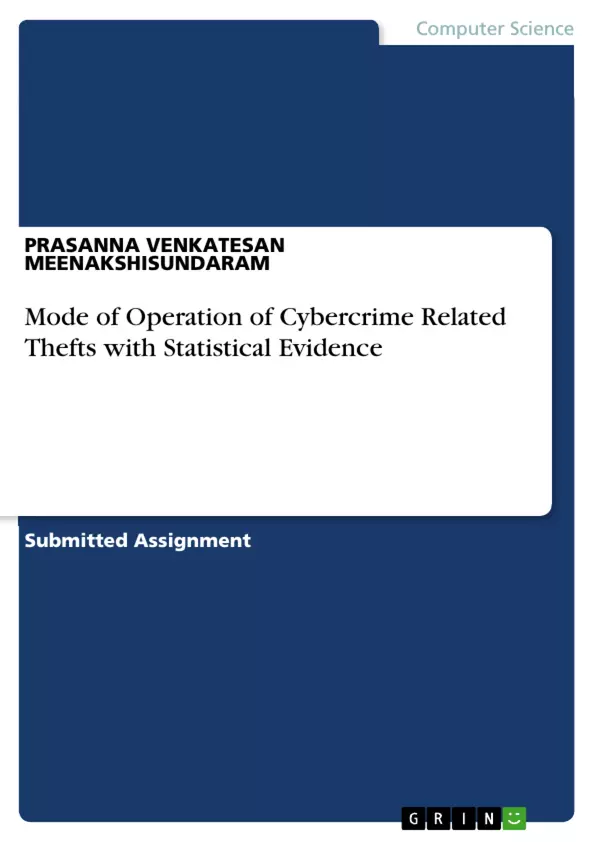Begun in the early 2000s, identity thefts, scams and cybersecurity frauds started to become prevalent. The reason behind this was that people were more eager and tempted to update their personal information in the digital and social platforms. Globally, the number of companies and governments are engaged in decreasing these scams and thefts. As there is immense improvement in advancement of technology, the risks associated increase at the same level. So, in order to face challenges like this in information technology, various steps and techniques are getting implemented by renowned and skilled technicians nowadays. This report will analyse the issues in detail along with the mode of operation of cybercrime related thefts such as phishing, skimming and provide possible recommendations with statistical evidence by comparing it globally on how it can be brought down to a minimal rate.
Inhaltsverzeichnis (Table of Contents)
- Abstract
- Introduction
- Identity Theft
- Phishing
- Internet Scams
- Firewalls & Anti-virus Software
- Modus Operandi
- Statistical Evidence
- Prevention Methods
- Conclusion
- References
Zielsetzung und Themenschwerpunkte (Objectives and Key Themes)
This report aims to provide a comprehensive analysis of identity theft, its various forms, and strategies for prevention. It explores the prevalence of cybercrime related thefts, including phishing and skimming, and examines how these activities have evolved with the advancement of technology. The report also delves into statistical evidence of identity theft and presents recommendations for minimizing its occurrence globally.
- The growth and impact of identity theft in the digital age
- Different methods of identity theft, including phishing, skimming, and fraudulent job offers
- The role of technology in both facilitating and mitigating identity theft
- The importance of data security measures, such as firewalls and antivirus software, in protecting personal information
- Strategies for preventing identity theft and minimizing its impact
Zusammenfassung der Kapitel (Chapter Summaries)
- Abstract: This chapter provides a brief overview of the report, outlining the scope of the research and its key objectives.
- Introduction: This chapter delves into the increasing prevalence of cybercrime related to the theft of personal information in the digital age, highlighting the vulnerabilities associated with online transactions and the need for robust security measures.
- Identity Theft: This chapter defines identity theft, explores its various forms and techniques, and provides insights into the evolution of cybercrime methods. It also touches upon the impact of identity theft on both individuals and institutions.
- Phishing: This chapter focuses specifically on phishing, a common form of identity theft, explaining its modus operandi and the potential risks associated with clicking on suspicious links. The chapter also discusses the use of software tools like HTML, Java Script, and PHP in phishing scams.
- Internet Scams: This chapter delves into the various forms of internet scams, such as fake lottery messages and fraudulent job offers, outlining how criminals deceive unsuspecting individuals to obtain their personal information.
- Firewalls & Anti-virus Software: This chapter explores the importance of firewalls and antivirus software in safeguarding computer systems against malware and viruses, emphasizing their role as crucial components of data security measures.
- Modus Operandi: This chapter examines the evolving strategies employed by identity thieves, emphasizing the increasing sophistication of their methods and the challenges they pose to security systems.
Schlüsselwörter (Keywords)
Key concepts and topics discussed in this report include: identity theft, cybercrime, phishing, skimming, internet scams, data security, firewalls, antivirus software, statistical evidence, prevention methods, and global implications.
- Citar trabajo
- MR PRASANNA VENKATESAN MEENAKSHISUNDARAM (Autor), 2020, Mode of Operation of Cybercrime Related Thefts with Statistical Evidence, Múnich, GRIN Verlag, https://www.grin.com/document/1234489



